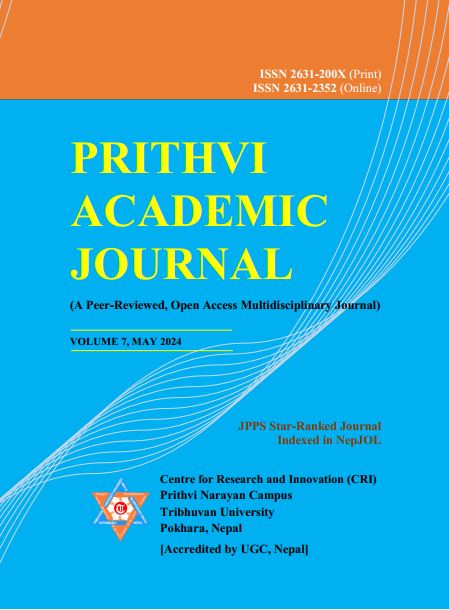Identification of Secondary Metabolites from Actinomycetes Isolated from the Hilly Region of Nepal
DOI:
https://doi.org/10.3126/paj.v7i1.65745Keywords:
Soil microbes, secoridary metabolites, antimicorbial assays, mass spectrometryAbstract
Actinomycetes are a unique class of Gram-positive bacteria with a fungus-like filamentous mycelium. They are often called ‘antibiotics factories’ because they can produce many potent secondary metabolites. At present, multidrug-resistant (MDR) pathogens are the main problem for humans and animals and to overcome this problem, more potent antibiotics are urgently required. Fortunately, Nepal has great geographical and climatic diversity serving as a home for various actinomycetes. This study identified several actinomycetes using morphological and biochemical assays from seven soil samples collected from different elevations in Nepal. The primary objective of this study was to screen the potent metabolites-producing actinomycetes. For this purpose, antimicrobial assays of seven isolates were carried out against Escherichia coli ATCC 25922, Salmonella typhi ATCC 14028, Shigella sonnei ATCC 25931, and Staphylococcus aureus ATCC 43300. The sample BT36 demonstrated the highest zone of inhibition against the tested microorganisms among others. Similarly, minimum inhibitory concentration (MIC) and minimum bactericidal concentration (MBC) of all isolates were carried out. Among them, the MIC of samples BT36, PT7, and AB1 were found to be 1.952 mg/mL, 0.012 mg/mL, and 0.029 mg/mL, respectively. Ethyl acetate extracts of resulting potent isolates PT7 and AB1 were subjected to mass spectrometric analysis. A total of 22 bioactive compounds were annotated from liquid chromatography-high resolution mass spectroscopy (LC-HRMS), including epopromycin A, myxopyronin B, gilvocarcin HE, and okilactomycin A. It is concluded that this study will be useful in setting up a strategy to isolate useful secondary metabolites from soil microbes from the hilly region of Nepal.





